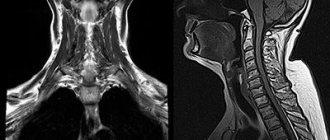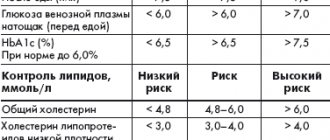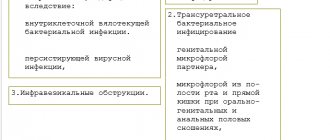Type of infection and route of infection
The causative agent of the disease is intestinal bacteria Enterobacteriaceae from the genus Yersinia. They are gram-negative rods up to 0.9 microns in size, growing on regular and depleted nutrient media. The most favorable temperature for them is in the range from +4 to +8 degrees, at which they are able to survive for a long time and actively reproduce on various foods. The mechanism of transmission of yersioniasis infection is close to pseudotuberculosis.
Some strains of bacteria are resistant to pasteurization, but boiling kills any of them within a few seconds. They are also sensitive to the effects of disinfectants. The peak incidence is usually observed in November and spring. People of any age are susceptible to the disease; yersiniosis is often found in children. Women are more resistant to pathogens than men.
Pathogens enter the human body through the fecal-oral or alimentary route, through a transfusion of contaminated blood, or directly under the skin through injury or injection. Transmission of intestinal yersiniosis infection can occur through contaminated foods that have not undergone heat treatment - meat, vegetables and milk, as well as water from open sources.
Symptoms of yersiniosis
The incubation period of yersiniosis pathogens lasts 1-6 days. Symptoms of yersiniosis are nonspecific. The disease is characterized by polymorphism of clinical manifestations:
- begins acutely, with the appearance of chills, headaches, weakness and malaise;
- possible pain in muscles and joints, sore throat, loss of appetite and insomnia;
- body temperature is subfebrile, can sometimes rise to 38-40 degrees;
- symptoms of general intoxication of the body are combined with signs of gastrointestinal damage - abdominal pain, nausea, diarrhea, vomiting;
- the skin becomes dry and a scaly, dotted or small-spotted rash may appear on it;
- Relative tachycardia and hypotension may occur;
- During the course of the disease, symptoms are possible that indicate damage to various internal organs - dark urine, heaviness or pain in the right hypochondrium, etc.;
- icteric staining of the sclera and skin indicates an enlarged liver; headaches may intensify over time, and focal and meningeal symptoms of central nervous system damage may appear;
- damage to the genitourinary system is accompanied by pain during urination and a decrease in daily diuresis up to complete anuria;
- as the disease progresses, pain in the abdominal area intensifies, signs of peritoneal irritation appear;
- in the second week, signs of acute arthritis may appear with damage to large joints, swelling of the face and elements of urticaria, hyperemia and pain in the eyes.
Forms of yersiniosis disease and their complications
The clinical classification of yersiniosis has not yet been fully developed. Taking into account the leading syndrome, it is customary to distinguish 2 groups of clinical forms:
- localized (gastroenterocolitic):
- generalized (icteric, septic, exanthem and arthralgic).
The clinical picture of yersiniosis of the localized form is limited primarily to damage to the gastrointestinal tract; generalized forms are accompanied by damage to other organs and systems.
- The gastroenterocolitic form of siniosis is the most common disease, accounting for almost 70% of all cases. The disease begins acutely, with an increase in temperature to 38-39 degrees, accompanied by headaches, anorexia, chills, malaise, abdominal pain and loose stools - up to 15 times a day. The duration of the disease is 2-14 days; severe forms are rare. It can occur in the form of enterocolitis, enteritis and gastroenterocolitis. In most cases, the syndrome of general intoxication is mild, abdominal pain is of low intensity, and the frequency of stools is 2-4 times per bowel movement.
- The icteric form is a complication of yersiniosis and can develop simultaneously with the gastroenterocolitic form or 2-4 days after the onset of intestinal dysfunction. Signs of liver damage come to the fore, and toxic hepatitis develops. Patients complain of pain and a feeling of heaviness in the right hypochondrium, sometimes itching of the skin appears. The disease is accompanied by yellowness of the sclera and skin, the size of the liver increases, pain appears on palpation, discoloration of feces and darkening of urine are observed. Hypertransaminasemia and hyperbilirubinemia are determined.
- The exanthema variety of the disease is manifested by exanthema and intoxication syndrome. With this form of yersiniosis, a rash appears on the skin on the 1st-6th day of illness; it can be dotted, large or small-spotted, with or without itching. After a few days, the rash usually disappears without a trace, and pityriasis-like peeling appears in its place.
- The arthralgic form occurs with intoxication, fever and severe pain in the joints, which, however, do not change externally. Arthralgia can cause immobility and insomnia.
- The septic type of the disease is quite rare and is the most dangerous, with mortality accounting for up to 30% of cases. It manifests itself as high fever with a daily range of up to 2 degrees, chills, enlarged liver and spleen. Damage to other organs is possible. The consequences of septic yersiniosis are endocarditis, nephritis with acute renal failure, pneumonia, hepatitis, meningitis, meningoencephalitis. Sometimes the result of a complication of yersiniosis is mocarditis - inflammation of the heart muscle. It is manifested by heart rhythm disturbances and tachycardia.
- The secondary focal form can occur independently or as a complication of other forms. In the second case, primary and secondary signs of the disease can be separated by a long period of well-being. Secondary manifestations are signs of damage to individual organs, causing concomitant diseases - the liver, thyroid gland (autoimmune thyroiditis), joints (arthritis), meninges (meningitis).
Complications of yersiniosis most often occur in the second or third week of the disease. Among them: exanthema (erythema nodosum, urticaria), arthritis of the joints (usually large ones), Quincke's edema, myocarditis, urethritis, appendicitis and conjunctivitis.
If you experience similar symptoms, consult your doctor
. It is easier to prevent a disease than to deal with the consequences.
Diagnosis of yersiniosis
Diagnosis of yersiniosis is carried out on the basis of the symptoms of the onset of the disease - fever, intoxication and signs of an acute form of gastroenterocolitis in combination with jaundice, exanthema and arthralgia. The most common are enteritis, terminal ileitis, enterocolitis and mesadenitis. Less common forms are sepsis, tonsillitis and secondary foci of infection.
Enteritis and enterocolitis are the most common, they manifest themselves in inflammation of the large and small intestines, accompanied by loose, foul-smelling stools up to 10-15 times a day, sometimes with mucus and blood. The duration of diarrhea, depending on the severity of the disease, ranges from 1 day to several months. In most cases, the temperature remains low-grade - about 37.5 degrees, sometimes it can rise to 39-40 degrees.
Almost all forms of the disease are accompanied by enlarged lymph nodes. Pathogens are able to concentrate in the lymph nodes with the formation of microabscesses - purulent inflammations. To confirm the diagnosis, tests for yersiniosis are performed.
Tests for yersiniosis
Diagnosis of yersiniosis is based on bacteriological and serological research methods. The culture technique is the same as for pseudotuberculosis. For the purpose of laboratory confirmation of the diagnosis, cultures of feces, cerebrospinal fluid and blood are performed on nutrient media. From a series of serological methods, agglutination reactions, latex agglutination, indirect hemagglutination with erythrocyte diagnostics and enzyme-linked immunosorbent assay are used.
In uncomplicated forms of the disease, laboratory data are not specific. The leukocyte level is normal or slightly increased. ESR in reactive arthritis can reach 100 mm/h, but antinuclear antibodies and rheumatoid factor are usually absent. Blood, lymph node tissue, cerebrospinal fluid, peritoneal fluid, and abscess contents are subjected to standard clinical microbiology techniques.
Differential diagnosis is carried out taking into account the clinical picture of the disease. Its primary goal is to exclude acute intestinal infections, various joint diseases, viral hepatitis, acute appendicitis and sepsis of other etiologies.
When X-ray studies of the intestinal area, a sharp narrowing of the affected part of the ileum is observed, the relief of the mucous membrane is often smoothed (the so-called “cord” symptom). At the following stages, it is possible to develop a granulomatous-ulcerative lesion in the ileum, which is morphologically indistinguishable from Crohn's disease.
The presence of yersiniosis is signaled by the accelerated positive dynamics of clinical signs and morphological changes in the terminal ileum during treatment with antibacterial drugs, while glucocorticoids and mesalazine are effective in Crohn's disease.
Difficulties may arise in the differential diagnosis of hepatitis of viral etiology and yersinia hepatitis. Yersiniosis hepatitis can manifest itself both as an independent variant and in a generalized form of yersiniosis. From the first stages of the disease, an increase in the blood bilirubin content and pronounced signs of intoxication are observed, while the activity of transaminases slightly increases.
Pathogenesis
The pathogen enters the body through the mouth, then the bacteria penetrate through the digestive tract into the mucous membrane of the small intestine, where an inflammatory process develops. If the pathogen penetrates nearby lymph nodes, the patient develops mesenteric lymphadenitis (inflammation of the lymph nodes of the abdominal cavity). The pathological process can stop here. But if bacteria overcome the lymphatic barrier and enter the blood, the infection spreads throughout the body and affects other organs: joints, liver, kidneys, spleen.
Treatment of yersiniosis
How to treat yersiniosis is determined for each patient by the doctor individually. Treatment of yersiniosis is prescribed depending on the form of the disease and its clinical picture. Uncomplicated forms of intestinal yersiniosis require treatment with etiotropic drugs and detoxification therapy for 7-10 days, depending on the severity of the patient’s condition, orally or parenterally.
Yersiniosis is also treated with antibiotics. The septic form of yersiniosis, secondary foci of infection and intestinal forms of the disease against a background of weakened immunity are treated with 2-3 types of antibacterial agents for 12-14 days, with detoxification therapy and the prescription of drugs that promote rehydration. If necessary, probiotics and multienzyme preparations can be used.
Complications
Due to the diversity of clinical manifestations, yersiniosis can be complicated by various diseases. Patients often develop the following pathologies:
- myocarditis is an inflammatory disease of the heart muscle;
- hepatitis and cholecystitis - inflammation of the liver and gall bladder;
- pancreatitis - damage to the pancreas;
- intestinal obstruction;
- appendicitis;
- peritonitis - inflammation of the lining of the abdominal cavity;
- meningoencephalitis - inflammation of the substance and membranes of the brain;
- arthritis – inflammation of the joints.
Note! Late administration of antibacterial drugs (after three days from the onset of the first symptoms) does not guarantee the prevention of complications and the infection becoming chronic.
Prevention of yersiniosis
Specific prevention of yersiniosis has not yet been developed. All preventive measures are based on the epidemiological characteristics of the infection. They come down to the fight against rodents as the main carriers of infectious diseases. In vegetable stores, warehouses and stores, rodents are periodically exterminated. In order to timely identify individuals with yersiniosis among domestic animals and birds, scheduled and extraordinary veterinary examinations are periodically carried out on farms. Dairy plants establish control over the processing of dairy products.
When storing fruits and vegetables, attention is paid to the quality of preventive measures for disinfection and deratization of vegetable stores when a new crop arrives. Current disinfection and deratization is carried out in winter and autumn. Places for storing any products that are not subject to heat treatment are subject to careful control; catering establishments monitor compliance with the technological and sanitary regime during storage and preparation of food. In the event of a separate disease or outbreak, the food enterprise from which the product that caused the infection came is identified.
In medical institutions, the prevention of yersiniosis is based on compliance with the anti-epidemic and sanitary regime adopted for intestinal infections. Along with sanitary measures, timely identification of relatives and medical personnel infected while caring for sick people is important.
This article is posted for educational purposes only and does not constitute scientific material or professional medical advice.
Causes of infection
The disease develops when the bacterium Yersinia enterocolitica enters the body. Yersinia is well preserved in low temperatures, in water and soil, but is sensitive to ultraviolet rays, drying, boiling and disinfectant solutions.
Wild and domestic animals become the reservoir and source of yersiniosis: rodents, livestock (mainly pigs), dogs. Sick people can spread the infection, but person-to-person transmission is rare. The disease is transmitted through food and water by consuming contaminated food and water. If hygiene rules are violated, in rare cases, contact-household transmission is possible.



